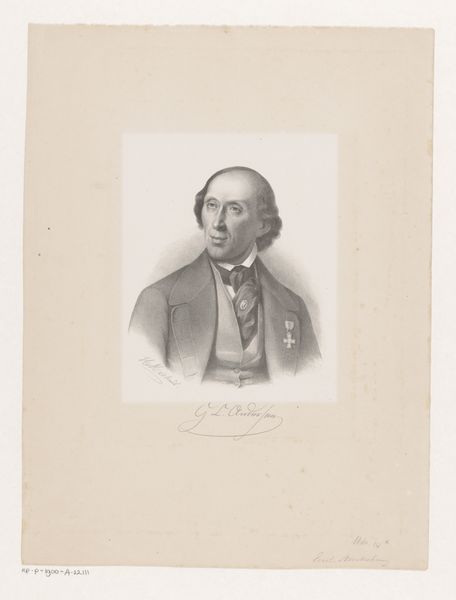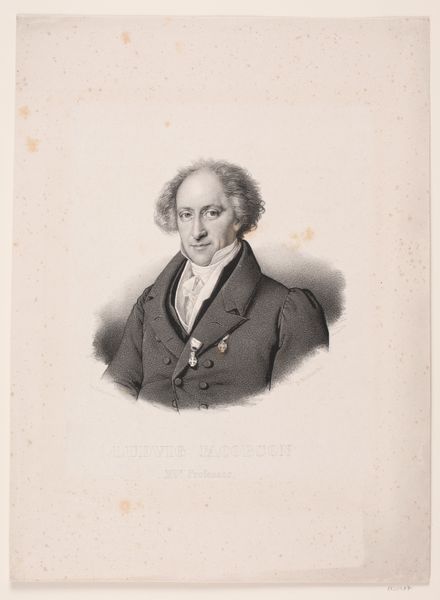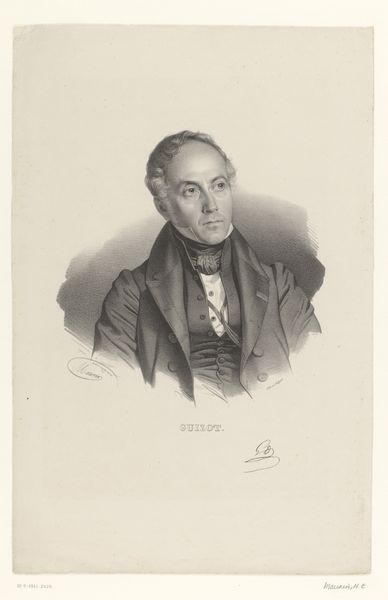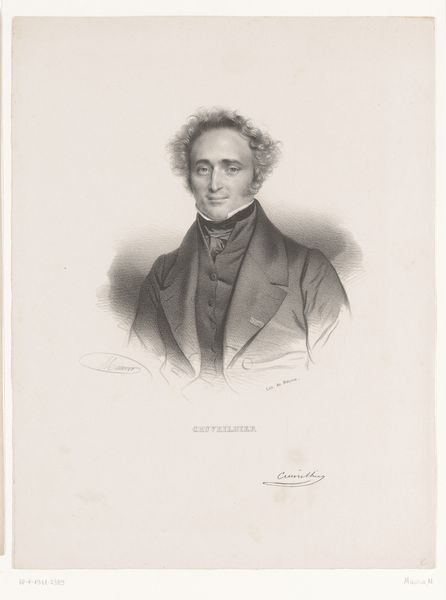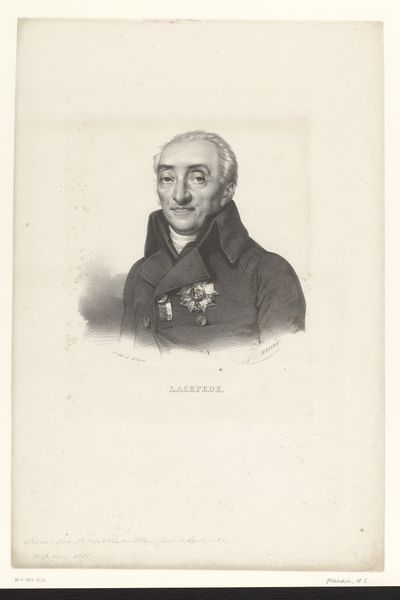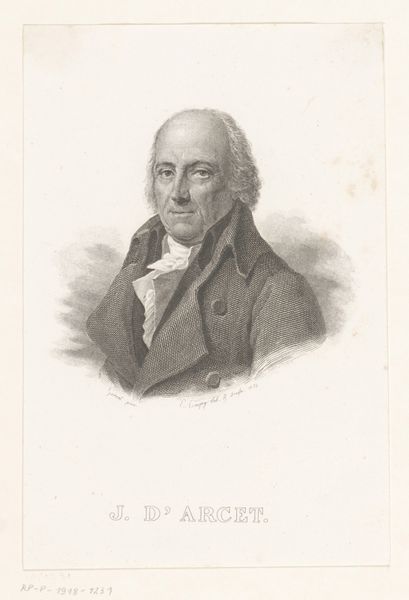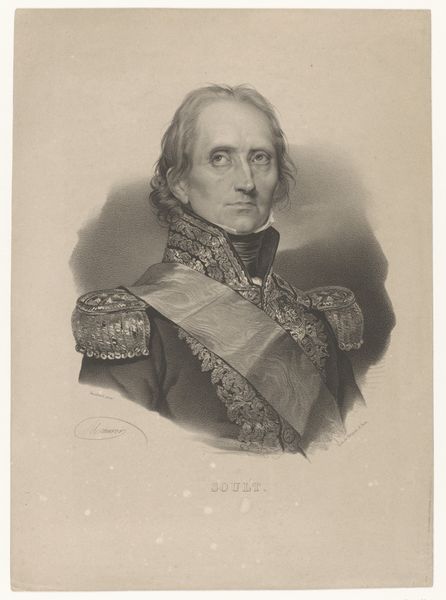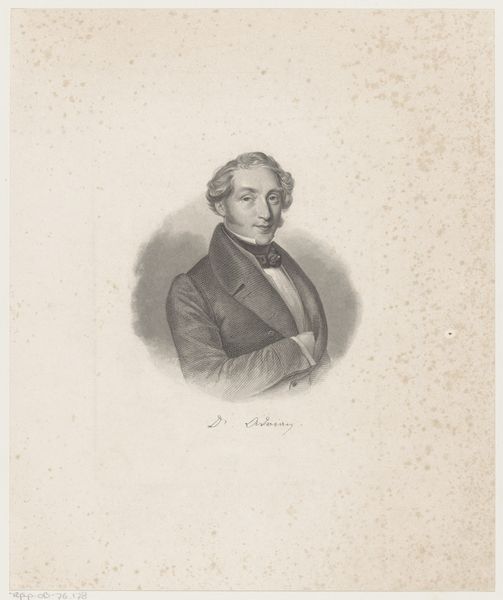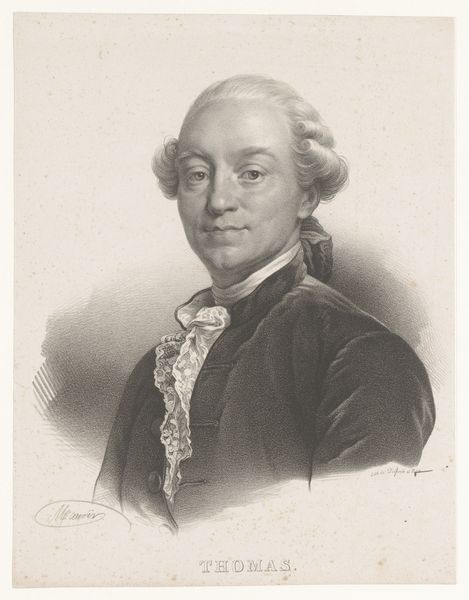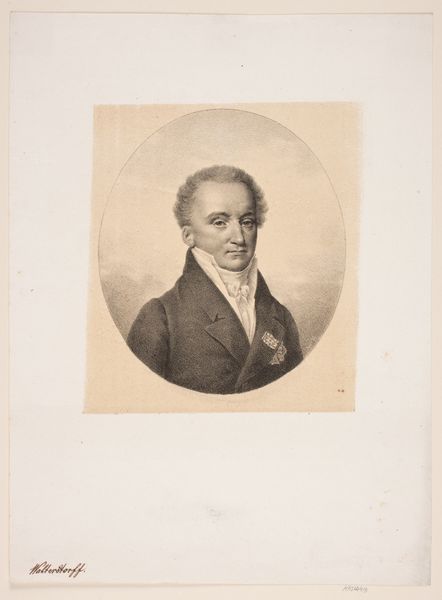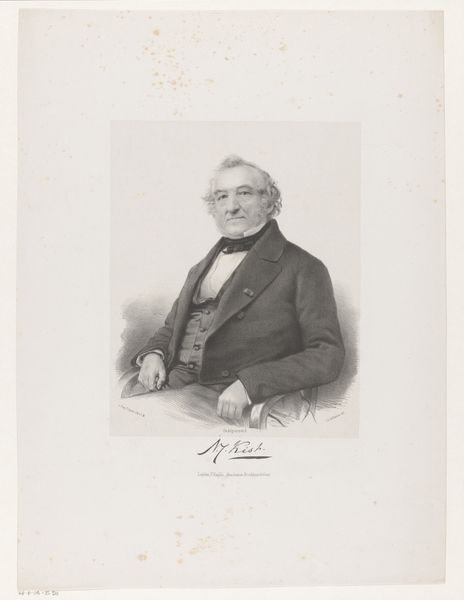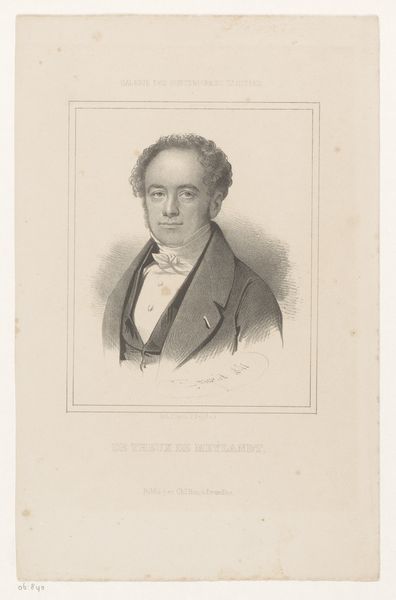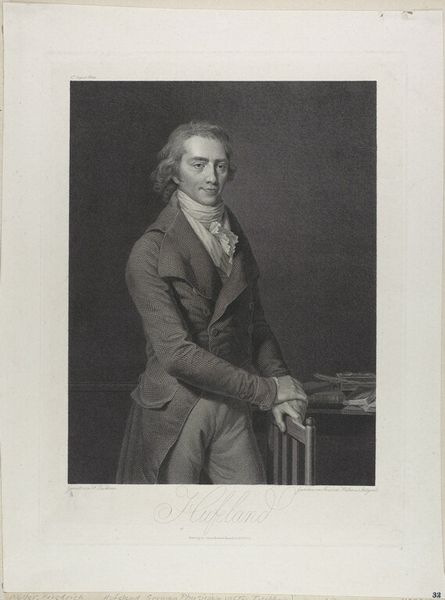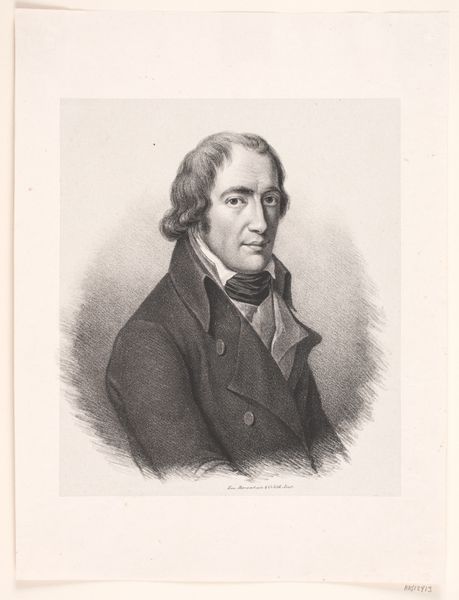
drawing, pencil
#
portrait
#
drawing
#
pencil drawing
#
romanticism
#
pencil
#
portrait drawing
#
academic-art
#
realism
Dimensions: height 360 mm, width 273 mm
Copyright: Rijks Museum: Open Domain
This is Nicolas Maurin’s lithographic portrait of Jean Civiale. The lithography process involves drawing on a flat stone or metal plate with a greasy crayon, then treating it with chemicals so that only the drawn areas attract ink. Paper is then pressed onto the surface to transfer the image. The result, as we can see here, is a print with subtly modulated tones, quite different than an engraving, which relies on incised lines. Maurin was one of the leading lithographers in France during the early 19th century. His career coincided with a boom in the print industry, driven by the increasing demand for affordable images, which, in turn, was enabled by technological advances. Lithography was a relatively quick and cheap way to reproduce images, making it ideal for mass production, and portraiture became a popular genre. In this context, it’s important to remember that Maurin, as a skilled maker, was an essential mediator in the circulation of images. The production of lithographs also provided employment for many workers, contributing to the growth of the urban workforce. The beauty of this print reminds us of how deeply art is entwined with the economic realities of its time.
Comments
No comments
Be the first to comment and join the conversation on the ultimate creative platform.
